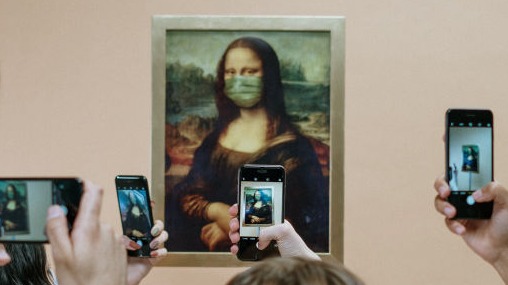Working in the media sector, you would imagine that Research, Development and Innovation (RD&I) would be central to every business, what with creatives always being on the lookout for new ideas. There are even roles like Researcher and Development Producer in most media companies, so surely RD&I is embedded everywhere.
Unfortunately not. In my experience, most media companies and creatives (including myself) tend to underestimate the huge difference between developing a new content idea and undertaking foundational RD&I which is truly innovative.
The Challenge
With the pressure of constantly available audience analytics and targets on their shoulders, commissioners and clients are, unsurprisingly, fairly risk-adverse in their commissions. And, with creative budgets usually tied to specific commissions, it is difficult to prioritise resources away from short-term delivery. Consequently, very few media companies have a separate R&D budget, let alone the dedicated teams we see in other sectors.
While there are many good development initiatives for new talent or programme pilots, they tend to assume that experiments will cost less than a current running series or output. And, will probably allow less room for changes in the tools used or how the idea is promoted and delivered to audiences. If there is dedicated R&D, it tends to be poorly funded, sidelined as part of the operational area of the business and not always looked on favourably by creatives.
The Alternative
If you look at other industries, they may find creativity more challenging, but you’ll find a much more nuanced understanding of RD&I. How it needs to both draw on all the business’s expertise and simultaneously be separate from the day-to-day of making, delivering and selling. And, that there is a portfolio of RD&I activity, from perfecting how to do the day-to-day, to the ‘moonshot’ that will completely reimagine the business.
It would be helpful if we in the media sector were more specific and honest about the different types of RD&I we are doing. That day-to-day creativity is not innovation, and even when we are undertaking RD&I that it isn’t always cool, groundbreaking and separate from the core business. Otherwise, we risk delivering Innovation Theatre, focusing on looking innovative without ever really delivering new value to the business or our audiences.
3 Flavours of Innovation
There is a range of models for defining Innovation, some including as many as 10 types, but I suggest we should at least recognise which of the following three types we are actually undertaking:
Reactive Innovation
This is very much innovation ‘lite’ – applying R&D processes to react to new ideas in the wider sector and mimic solutions of other companies or creatives. This is the ‘keeping up with the Joneses’ of the innovation world – applying a new solution to the local context of the business. It is likely innovative in terms of the business or local sector, and the context of the solution may be novel. However, for a purist, it isn’t true innovation and won’t generate Intellectual Property or create long-term competitive advantage. But it is necessary, valuable and can require RD&I skills and processes.
Iterative Innovation
We can systematically review our production and operational processes, our relationships with suppliers, collaborators and clients, and our output and its impact on audiences to explore opportunities to improve what we do. This could be delivering cost/time efficiencies, new processes that offer creative opportunities, new features that add to the benefits for audiences or new ways to monetise content. It is not about stepping beyond your market or what you do, but about making iterative improvements. There are those who argue that done consistently, this is more valuable than aiming for moonshots, which rarely happen.
Disruptive Innovation
The moonshot, stepping into the unknown, beyond your current product/sector to fundamentally rethink not just what is delivered, but how it is delivered and the value it creates. Examples like the iPhone, Google or Uber are used to illustrate this, but it doesn’t have to be at that scale. More important is the value in redefining the market, product or your business and changing the state of the art. When you innovate disruptively, there is no going back to the way things were.
3 Questions
These three definitions aren’t about the level of creativity, they are about the breadth and depth of the RD&I. Ask the question…
- are you applying something you’ve seen elsewhere within your current product (e.g. HOW CAN WE DO THAT TOO… so we can keep winning commissions for factual TV programme)?
- are you working within your usual problem space (e.g. HOW MIGHT WE… improve the way we make factual stories)?
- Or, are you working beyond your problem space (e.g. WHAT IF… we could save the world with a story)?
In my experience, far too many R&D projects claim they are doing disruptive innovation, but are actually doing reactive innovation. But personally, I’d like to see more focusing on the middle ground and undertaking systematic iterative innovation.
This would involve analysing your processes, your skills, your market and your audiences, then asking ‘How might we…’. It will help you make iterative changes that are more likely to cost less and create dividends in the shorter-term. Meanwhile, the disruptive ‘What if..’ questions take you broader, towards more radical changes that could completely reimagine the business, disrupt the market and win big in the longer-term.
Creativity+
Having done years of workshop facilitation, I’ve noticed that the really groundbreaking ideas often initially come from someone on a team who wouldn’t naturally label themselves as creative, and who isn’t so caught up with the rush to reactive innovation. Someone who knows the challenges the business faces and is thinking ‘how might we… make things easier / better / faster everyday’.
I’d suggest, when it comes to RD&I, that the media sector needs to actually be a bit less creative and a bit more methodical, to bite off one problem at a time. That doesn’t mean omitting creative roles, I’m a big believer in the multidisciplinary approach to innovation; however, it does mean having a few less creatives involved in development in order to involve more technical, administrative and craft roles.
Creativity is essential to the media industry, it is our super-power, but it is only one part of the innovation process. We need to be more nuanced about how we use the term innovation and the questions we ask.


